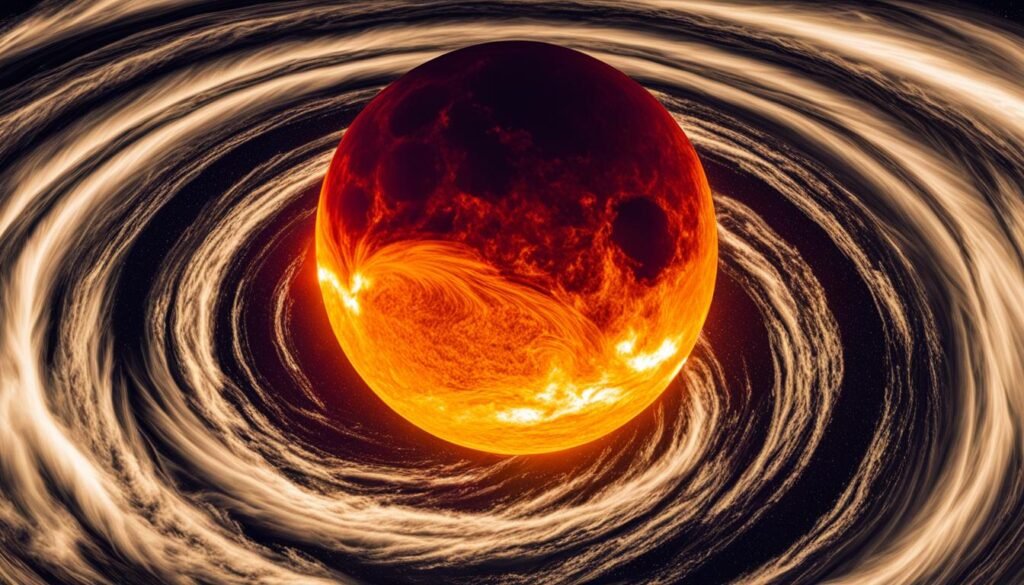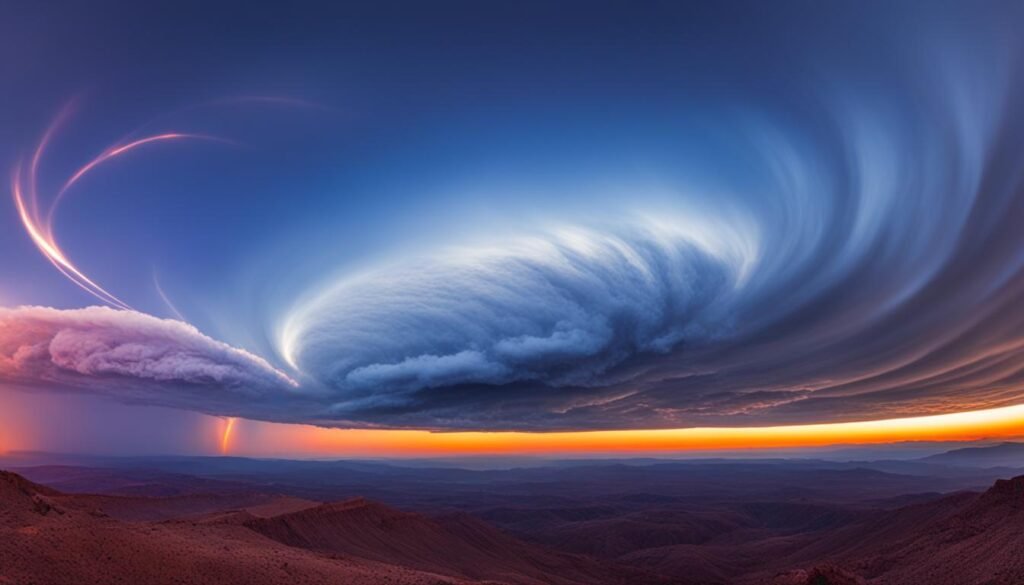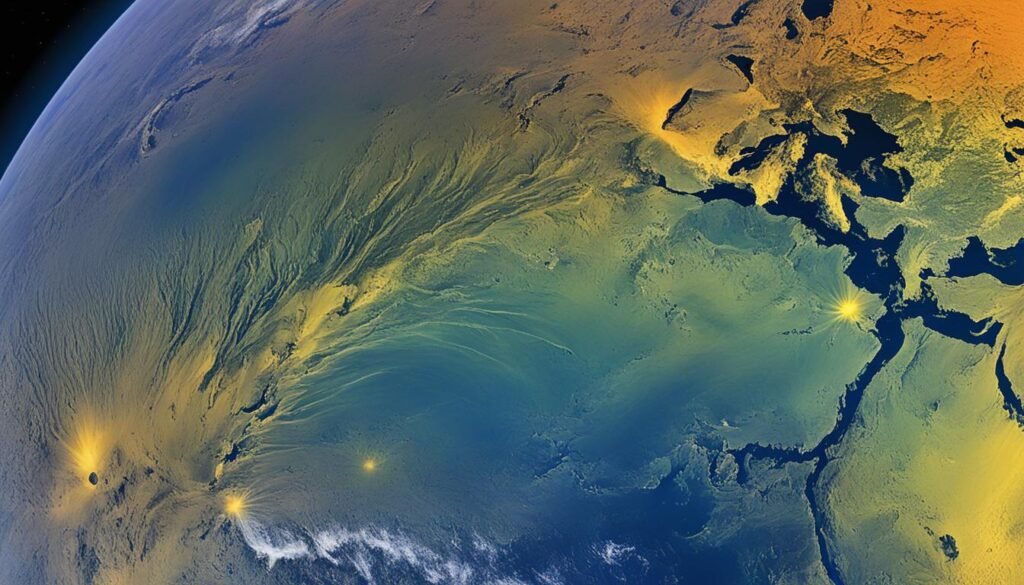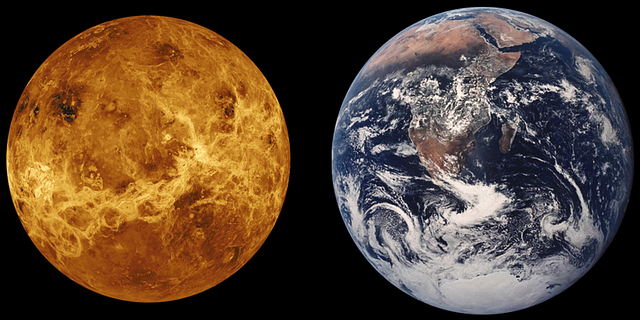Planet Venus Pictures: Explaining Venus with pictures.
Through advanced imaging, NASA has made a huge leap. Pictures of Venus has been captured to learn more about this mysterious neighbor. The Parker Solar Probe’s Venus Thermal Emission Radiometer lets us see Venus’s nightside. Here, temperatures reach about 860 degrees Fahrenheit—so hot that earlier spacecraft had a tough time.
NASA’s Parker Solar Probe has captured the first visible light images of Venus’ surface from space. Despite Venus being smothered in thick clouds that usually shroud its surface from sight, Parker used its Wide-Field Imager (WISPR) during recent flybys of the planet. These images were taken in wavelengths of the visible spectrum, allowing us to see features like continental regions, plains, and plateaus. The luminescent halo of oxygen in Venus’ atmosphere is also visible in these images.

Show the Parker Solar Probe’s view of Venus as a swirling mass of yellow and brown, with thick clouds covering the planet’s surface. The image should convey a sense of heat and intensity, with bold, bright colors and dynamic shapes that make it feel like the viewer is right in the middle of the inferno. Use a combination of curves and sharp angles to create a sense of motion and energy that suggests the turbulence of the Venusian atmosphere. Avoid any reference to the probe or to outer space more broadly, focusing instead on the breathtaking beauty and power of this nearby planet.

Venus shines brightly in night sky, only outshone by the moon and sun. It’s a guiding light for amateur astronomers and a key interest for scientists. Through efforts like explaining Venus with pictures, I aim to understand its changes. People of all walks of life are curious about how it moved from possibly habitable to very hot due to a runaway greenhouse effect. These efforts to visualize Venus add a lot to our Venus information collection. They give us new views on its landscape and atmosphere. This helps scientists and curious people everywhere get a better grasp of Venus.
Unveiling the Planet Venus
In our journey through space, Venus fascinates us with its mystery and allure. I’ve longed to see an actual picture of Venus. Thanks to NASA’s Parker Solar Probe, the first visible light images are taken in July 2020. This milestone gave us rare look at Venus hidden beauty. Let’s watch the video below.
Watch the first image of Venus
Another flyby in February 2021 wasn’t just a flyby. It let us gather images to make a stunning video of Venus’ nightside. This effort, published in Geophysical Research Letters on February 9, 2022, was a big step in exploration. Despite the hot 860 degrees Fahrenheit, we could see features like plains and a glowing atmospheric halo.
From this Venus information, I learned Venus glows faintly in space’s darkness, showing off its warm surface. Looking back to 1975’s Venera 9 lander, I see our progress in observing Venus. The Wide-field Imager for Solar Probe (WISPR) now gives us detailed geology and mineral data about Venus.
The Parker Solar Probe showed us Venus is geologically active. An actual picture of Venus revealed fresh volcanic activity. Images of a volcanic vent changing over eight months prove Venus is still lively. Volcanoes like Ozza Mons and Maat Mons remind us of Earth’s, yet they’re uniquely Venusian.
We’re uncovering Venus secrets, intrigued by its active volcanism and different evolutionary path. November 2024 will be special, as the Parker Solar Probe images Venus again. We look forward to this and future missions like NASA’s DAVINCI and VERITAS, and ESA’s EnVision. They will study Venus in depth, offering a clearer picture of Venus and advancing our understanding of planetary evolution.
A Glimpse Into Venus’s Atmosphere
I am leading the way in exploring other planets. We’re captivated by the amazing pictures of Venus surface. These first visible light images, taken by NASA’s Parker Solar Probe in July 2020, open a new door to understanding Venus. They show us continents, plains, plateaus, and the planet’s unique atmosphere.
The deep analysis of these Venus information, found in Geophysical Research Letters, reveals the planet’s dynamic nature. The images show a bright halo around Venus, caused by atmospheric oxygen. This halo adds beauty to an already fascinating planet. Looking at these images, we feel a sense of wonder. I’m staring at a world with temperatures close to 860 degrees Fahrenheit. It’s so hot the surface shines in space’s darkness.

Certainly! Here’s the table summarizing the provided information about Venus and its atmosphere:
| Topic | Details |
|---|---|
| Airglow | Venus shows a special type of light called airglow, also observable on Earth. |
| Dust Ring | The Parker Solar Probe found Venus’ dust ring and observed interesting radio waves. |
| Tail Ray | Researchers discovered a ‘tail ray’ nearly 5,000 miles long coming from Venus’ atmosphere. |
| Future Missions | Excitement for future missions like NASA’s DAVINCI, VERITAS, and ESA’s EnVision to learn more about Venus’ atmosphere and surface. |
| Comparison with Earth | Venus and Earth are like siblings, both formed about 4.5 billion years ago, but with significant differences in rotation, atmosphere, and surface conditions. |
| Rotation | Venus spins very slowly, taking 243 Earth days to complete one rotation. |
| Atmosphere Composition | Venus’ atmosphere is mostly carbon dioxide. |
| Extreme Conditions | Venus experiences extreme winds, volcanic activity, and temperatures above 900 degrees Fahrenheit. |
| Planet Characteristics | Demonstrates how different and extreme planets can be compared to Earth. |
Planet Venus Pictures: A Visual Exploration
We’re changing how we see Venus, the second planet from the Sun. The Venus Express mission has given us a closer look at this mysterious world. Every picture of Venus tells stories of our space adventures, showing details once hidden by sulfuric acid clouds. The VIRTIS instrument on the spacecraft captured spirals in the clouds from 50 kilometers up. These images explain Venus with pictures in an engaging and educational way.
The Venus Express entered orbit around Venus on 11 April 2006. It gave us new views of the planet’s south pole from 206,452 kilometers away, showing its dynamic atmosphere. The mission gave us valuable data right from its first 9 days in orbit. The discovery of phosphine in the atmosphere led to talks of possible life. Sara Seager of MIT highlighted the importance of this find.
In its first orbit phase, Venus Express had five data-gathering sessions. These were planned before it got to the closest point to Venus, allowing us to see the full planet. Instruments like MAG and ASPERA looked into Venus’s secrets, studying solar wind and how the atmosphere might escape. These actions were key for the mission’s success in gathering data.
The journey to understand Venus is still going. Every datapoint and picture adds to our knowledge of Venus. These findings help us learn more about Venus’s atmosphere and other mysteries. Each discovery makes the picture of our neighbor planet clearer.
Venus’s Peculiar Rotation and Revolution
In this journey to explaining Venus with pictures, we find a unique feature. It spins the opposite way from most planets. This backward spin is called retrograde rotation. Let me say something about the retrograde rotation:
Retrograde rotation refers to the opposite direction of rotation compared to the norm. Most planets, including Earth, rotate counterclockwise (prograde rotation) when viewed from above the North Pole. However, some planets and moons exhibit retrograde rotation, spinning clockwise or in the opposite direction. Scientists believe that close encounters with other celestial bodies or gravitational perturbations during their early history might have caused these retrograde rotations.

The image you’re seeing just on your top conveying the intense heat and atmospheric pressure of Venus. Show the planet’s thick, swirling clouds and the bright, scorching sun in the background. Use warm colors like red, orange, and yellow to emphasize the extreme temperatures on the planet’s surface.
Venus is quite the oddball with its slow spin and quick orbit around the Sun. It takes 243 days to spin once but only 225 days to circle the Sun. So, a day on Venus is longer than a year, making the sun rise in unusual ways. This slow spin and speedy orbit make Venus fascinating. Through pictures and ongoing study, we’re getting to know why Venus moves this way. Explaining Venus with pictures shows the beauty of space and the surprises it holds.
The Earth’s Unusual Neighbor
Looking up at the night sky, it’s hard to miss Venus shining brightly. This planet draws the attention of scientists and sky-watchers worldwide. I have a collection of planet Venus pictures that show its stunning beauty. Through a telescope or binoculars, I can see a picture of Venus. It looks like our Moon’s phases but is unique in its own way.
Venus keeps fascinating us with new info. We go beyond just watching its glow every 584 days. Its brightness comes not only from being close to us. It’s also due to its thick atmosphere that reflects sunlight well. This makes the Venus stand out in our night sky, capturing interest through time.
When we look at planet Venus pictures, we see not just rocks. Instead, we discover a world unlike our own. Venus shows us how varied our solar system is. It sparks our curiosity to keep exploring outer space. With every study, we learn more about Venus. This strengthens its mystery as our neighbor.
Insights into Time on Venus
Exploring Venus with pictures shows us time differently. Venus turns our timekeeping on its head with its unique days and years. A day there lasts 243 Earth days, while it orbits the sun in just 224.7 days. This means a year on Venus is shorter than a day there. Imagine that! Let me explain more: On Venus, a day (one rotation on its axis) takes approximately 243 Earth days, while a year (one orbit around the Sun) on Venus lasts about 225 Earth days. This unique rotation period results in a longer day than year, making Venus days longer than its years. Are you surprised like me?
Venus is also known for spinning the opposite way to most planets. It rotates clockwise, not anti-clockwise. This leads to sunrises on Venus that are unlike Earth’s, happening twice a year, rising in the west and setting in the east.
Looking at Venus information, I can see its extreme conditions. Venus is super hot, hotter than Mercury, with temperatures reaching 462°C. Plus, its atmosphere is very dense, like being 1 km underwater on Earth.

NASA’s Parker Solar Probe has recently given us better images of Venus. It used special cameras to capture features like Aphrodite Terra. These images also show us Venus’s nightside, glowing at about 860 degrees. Thanks to this probe and other missions, we’re learning lots about Venus. This helps prepare for new missions aimed at studying its atmosphere and surface more.
Venus, so bright in our night sky, has fascinated me since ancient times. Its unusual rotation and slight tilt add to its mystery. Thanks to hard work and technology, I am getting closer to solving the secrets of Venus.
The Visual Wonders of Venus’s Surface
The pictures of Venus’s surface show us a world that’s stark and beautiful. The surface temperature there is a hot 464°C. This high heat and an air pressure 92 times Earth’s make Venus very extreme.
The radar images reveal a lot about Venus’s geological activities. The planet Venus show a surface changed over 500 million years. They suggest volcanic activities and changes in the surface, offering clues from beneath the dense atmosphere.
Venus lacks Earth’s magnetic field, which protects us from the harsh solar wind. This led to Venus losing its water, making it very dry. Despite this, Venus’s thick atmosphere gives scientists important data about its environment and water loss history.
Efforts to understand Venus’s surface got help from the European Space Agency (ESA) and the Japan Aerospace Exploration Agency (JAXA) through BepiColombo. This spacecraft flew by Venus on October 15, coming within 6,000 miles. It aims for a closer look at Venus in 2021 before moving on to Mercury.
Our knowledge of Venus grows with each picture of Venus’s surface and spacecraft visit. These planet Venus pictures show an extreme, fascinating world. They highlight our endless drive to explore and understand the universe.
Historical Observations of Venus
Venus has always captivated us, shining brightly in our night sky. Its study dates back centuries, gaining momentum with Galileo’s telescopic views. These observations strongly supported the heliocentric model, laying the groundwork for all I know about Venus today.

Later missions offered deeper insights into Venus. Mariner 2 and 5, and Mariner 10, showed us a Venusian world similar in size to Earth but very different in environment. Pioneer Venus 1 and 2 missions revealed its extremely hot surface, peaking at over 860 degrees Fahrenheit.
Venus shines brightly due to its close proximity to the Sun and its reflective atmosphere. This atmosphere, rich in carbon dioxide and sulfuric acid, makes Venus inhospitable to life as I know it. Yet, its beauty captures our imagination, making the planet Venus intriguingly complex.
Venus’s unique features include a lengthy day that exceeds its orbital period. It rotates counter to most planets and has an almost perfect circular orbit. These fascinating traits, combined with its brightness and closeness to Earth, keep our interest in Venus alive.
Venus through the Lens
I’m lucky to see the transit of Venus, a rare event in the sky. This phenomenon draws the attention of both hobbyists and expert astronomers. The 2004 event on June 8th was special, giving us actual pictures of Venus as it moved across the sun. These sightings happen in pairs, spaced by years, and are averages seen every 80 years. They let us peek into the life of our neighboring planet.
Globally, from South Korea’s Gwacheon National Science Museum to New York City’s High Line park, people were eager to catch a picture of Venus. They used various tools, from old telescopes to the latest digital cameras like the Olympus C-3040 and Nikon D70. This event sparked a worldwide effort to see Venus against the sun’s bright surface.
In various places, Venus appeared as a dark shape on different backgrounds, from the Taj Mahal to sunrise in Jordan’s Amman. These moments were carefully documented, noting important times and mid-transit points in Universal Time for accuracy. The effort to get pictures of Venus’s surface was serious. Observers used software such as The Gimp and Jasc Paint Shop Pro to study the pictures closely. They even noticed the detailed black drop effect, which helped us learn more about this event.
Thanks to eyepiece projection photography, I’ve got important images, whether with 25mm or 6mm lenses. Figures like Raminder Samra at Vancouver’s MacMillan Southam Observatory play a key role in enhancing our view of Venus. They help us see the planet’s challenging but intriguing surface better.
Venus transits are key moments that help measure distances in our solar system with the Astronomical Unit. They show our eagerness to study Venus more closely. We follow in the steps of past observers like Horrocks and Crabtree. Our task is to keep this tradition of celestial study alive. We continue to be amazed by the beauty of the universe shown in these remarkable events.
Exploring Venus with pictures has been an eye-opening journey. It’s helped us understand the cosmos better. Discoveries like atomic oxygen in Venus’s atmosphere are thrilling. These findings, shown in Venus pictures, surprise astronomers and the public.
Such insights suggest Venus might have had water and life billions of years ago. This is captured in pictures of Venus. The planet’s long day-night cycle adds mystery. It makes us think about exoplanets too. Soon, missions like ESA’s EnVision and VERITAS will explore Venus further. They aim to launch in the coming years. These efforts will expand our knowledge and could lead to major scientific breakthroughs.
My collection of Venus pictures does more than show the planet. They inspire my quest for space knowledge. As I learn from each discovery, my journey through the stars continues with hope.
FAQ
What do pictures of the planet Venus reveal about its environment?
Venus is super hot with a thick air made mostly of carbon dioxide. It has clouds of sulfuric acid. Despite Mercury being closer to the Sun, Venus is the hottest planet.
Can we see the actual surface of Venus in pictures?
We can’t see Venus’s surface directly because of its thick atmosphere. But, radar from missions like Magellan helps us see it. It shows us mountains, volcanoes, and big craters, telling us about its geology.
How do Venus’s rotation and revolution compare to those of Earth?
Venus spins unlike most planets, opposite to Earth’s direction. It takes 243 Earth days to spin once. Yet, it goes around the Sun in 225 days, faster than its own spin.
What makes Venus an unusual neighbor to Earth?
Though similar in size to Earth, Venus is much different. It’s got an extreme atmosphere and spins slowly in reverse. A day there is longer than a Venus year.
What can we learn about time on Venus from pictures?
Pictures and data tell us Venus’s days are very long. A single day lasts over half an Earth year. The Sun rises there only every 117 days, and in the reverse direction, unlike on Earth.
What geological features are visible on Venus’s surface?
Radar maps show Venus’s landscape has volcanoes and craters. These signs point to active geology under its thick atmosphere. It’s full of volcanic activity.
How has our historical understanding of Venus evolved through observations?
Since Galileo, our look at Venus has come a long way. Early telescopes to modern missions have taught us a lot. We’ve learned about its air, climate, and what its ground is like, showing us new details about the planet.
What contrasts are present when viewing Venus through the lens?
Looking at Venus shows a place of contrasts. Its ground is dry with volcanoes and mountains. Above, there is a thick atmosphere of sulfuric acid, very different from Earth.
Why is Venus often brighter than other celestial bodies in the sky?
Venus is often brighter than other celestial bodies due to its proximity to Earth and its highly reflective, cloud-covered atmosphere, which efficiently reflects sunlight.

